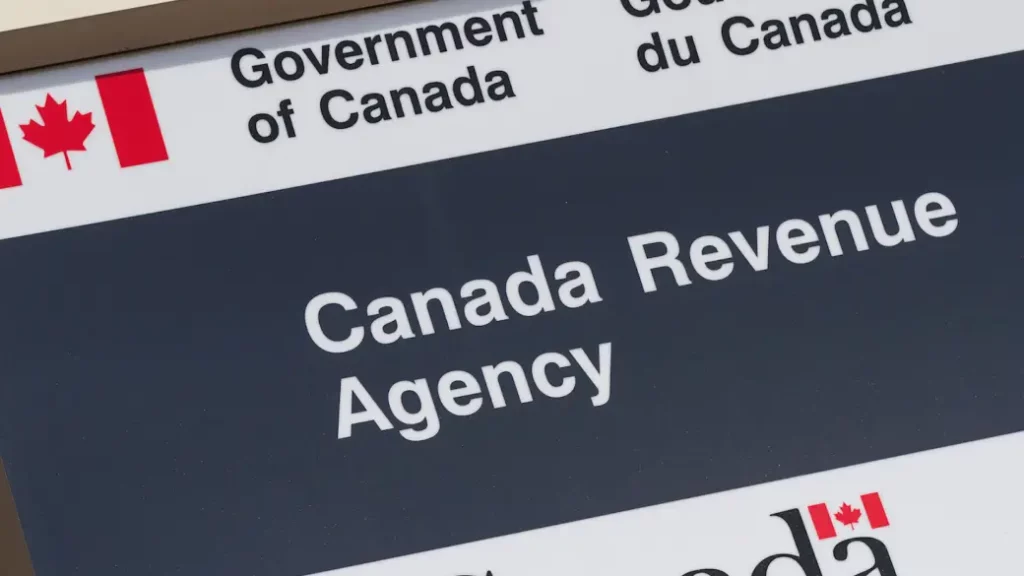In today’s evolving healthcare landscape, many small and medium-sized businesses leverage Health Spending Accounts (HSAs) as a tax-efficient way to support employees’ medical costs. However, setting up an HSA that fully complies with the Canada Revenue Agency’s (CRA) requirements is crucial for safeguarding your benefits and ensuring tax advantages remain intact.
This Step-by-Step Guide to Making Your HSA CRA Compliant aims to help employers and plan administrators navigate the complex compliance landscape, minimize audit risks, and optimize their health benefit programs. A tax-free benefit becomes a tax trap if it’s not set up correctly, so understanding the constraints and best practices is essential.
According to recent CRA audit statistics, small businesses with unstructured health benefit plans face increased scrutiny, with some penalties levied on non-compliant reimbursements. While these accounts can offer significant tax advantages, failure to adhere strictly to the rules can lead to unnecessary taxes, audits, and penalties.
This comprehensive walkthrough will help you establish and maintain a compliant HSA that satisfies all CRA requirements, from initial setup to ongoing administration. Whether you’re a business owner, HR professional, or benefits provider, implementing the right practices is critical for maximizing the benefits and avoiding compliance pitfalls.
Understanding CRA’s Perspective on HSAs

To ensure CRA compliance, it’s vital to understand how the agency perceives Health Spending Accounts. The CRA views these accounts as Private Health Services Plans (PHSPs), a classification that dictates how they should be structured and documented.
By understanding their perspective, you can tailor your HSA setup to meet regulatory expectations, avoid reclassification of reimbursements as taxable benefits, and pass any potential audit unscathed. CRA’s primary concerns include misuse of the plan for personal benefit, lack of proper documentation, and the absence of third-party administration.
In this section, we explore how the CRA perceives HSAs, what their compliance criteria are, and key pitfalls to avoid.
How the CRA Views Health Spending Accounts as Private Health Services Plans
The CRA considers HSAs under the broader category of Private Health Services Plans, which are arrangements designed to reimburse or pay for qualifying health expenses. Unlike traditional insurance, PHSPs are defined by their structure and the way benefits are provided.
The CRA’s criteria focus on the “business benefit” nature of the arrangement, emphasizing that the plan should not predominantly serve personal purposes and must be administered properly. A plan that is structured as a true PHSP ensures reimbursements are not taxed as employment income, maintaining their tax-free status.
One major difference in CRA’s view is whether the plan shifts the risk and benefits directly to employees or if it’s simply an employer-funded arrangement providing employee benefits. If the CRA perceives the plan is primarily for personal benefit, or if the structure is ambiguous, they may reclassify the reimbursements as taxable income, nullifying the tax advantage.
Top CRA Compliance Concerns That Employers Need to Address
CRA’s scrutiny revolves around specific compliance concerns that, if not addressed, can jeopardize the tax-advantaged status of the HSA.
First is the risk of personal benefit misuse. If the plan reimburses expenses unrelated to employment or if employees claim non-eligible expenses, the CRA may view the plan as a taxable benefit. Clear eligibility rules and strict claim criteria are needed to prevent this.
Second is lack of proper documentation. The CRA expects comprehensive records for each claim, including receipts, approvals, and reimbursement logs. Without adequate documentation, claims can be challenged or disallowed during audits.
Third, lack of third-party involvement increases the risk of non-compliance. Plans that are solely administered by the employer or plan administrator without third-party oversight may be considered self-managed and more prone to errors or abuse. Working with an independent administrator helps reinforce compliance.
Finally, the CRA emphasizes whether the plan has set reasonable annual limits. Benefit plans that provide unlimited or excessively generous reimbursements could be viewed as fringe benefits rather than legitimate employee benefits. Defining clear limits aligned with industry standards helps support the plan’s legitimacy.
The Risks of Non-Compliance: Reimbursements as Taxable Income
In situations where the CRA finds that a plan does not meet the criteria of a valid PHSP, reimbursements made under the HSA are considered taxable benefits. This means employees will be taxed on those benefits, and the employer may face additional penalties for issuing non-compliant reimbursements.
Reimbursements that lack supporting documentation, are for non-eligible expenses, or are paid out of the wrong account can trigger these penalties. It’s also essential to ensure expenses are legitimate medical costs, as defined by the CRA, to avoid reclassification.
Proactively structuring your HSA, maintaining robust documentation, and understanding CRA’s focus areas are key steps to preventing this costly mistake. Remember, the best defense against CRA challenges is meticulous planning and compliance.
Compliance Blueprint: 6 Steps to a CRA-Compliant HSA

Creating a compliant HSA isn’t a matter of chance—it requires methodical planning and consistent management. The following 6-step blueprint provides a visual checklist for establishing and maintaining an HSA that satisfies CRA’s strict standards.
| Step | Action | Why It Matters |
| 1 | Incorporate your business (if not already) | Sole proprietors face more scrutiny; incorporation enhances credibility and separates personal and business finances. |
| 2 | Create a formal written HSA plan | The CRA requires a documented plan to recognize it as a PHSP and establish clear rules. |
| 3 | Use a third-party administrator | Reduces errors, maintains neutrality, and strengthens CRA compliance practices. |
| 4 | Set reasonable annual limits | Ensures benefits are “reasonable” and aligned with CRA expectations for fringe benefits. |
| 5 | Track all claims + keep receipts | Maintains audit-proof records that validate benefits claimed, necessary during CRA reviews. |
| 6 | Separate business and personal finances | Prevents conflicts of interest, ensures proper account segregation, and avoids reclassification. |
Incorporating Your Business
Starting with the right legal structure — whether sole proprietorship, partnership, or corporation — significantly influences your HSA’s compliance status. Operating as a sole proprietor often exposes plans to higher scrutiny because of the blurred lines between personal and business benefits.
Incorporating your business lends credibility and helps delineate business obligations from personal affairs. It also makes it easier to justify the HSA as a legitimate employee benefit rather than a personal expense. Proper incorporation demonstrates that the plan serves a business purpose and aligns better with CRA expectations.
Furthermore, corporately structured businesses have access to more sophisticated administration options, formalized policies, and third-party oversight, all of which contribute to a more robust compliance framework. If you’re already incorporated, confirming your business’s legal status and operating under proper corporate governance facilitates compliance efforts.
Developing a Formal Written HSA Plan
CRA’s emphasis on documentation cannot be overstated. Developing a comprehensive, formal written HSA plan is essential for establishing the plan’s legitimacy. This plan should detail eligibility criteria, benefit limits, eligible expenses, administration procedures, and claim processes.
A formal plan acts as a blueprint for how the benefit is administered, ensuring consistency and reducing ambiguity. It should be drafted with legal or tax advisors familiar with CRA policies, and then distributed to employees and plan administrators.
The written plan also provides clarity in the event of audits, demonstrating that the benefit is structured, transparent, and adheres to CRA standards. It’s advisable to review and update this document regularly, especially when changing benefit limits or expanding coverage.
Advantages of Using a Third-Party Administrator
Managing an HSA internally can lead to errors, missed deadlines, and compliance gaps. Engaging a third-party administrator (TPA), such as Wellbytes or a specialized health benefits provider, mitigates these risks by offering professional oversight.
TPAs bring expertise in plan setup, claims processing, record-keeping, and regulatory compliance. They often have built-in audit support tools, detailed reporting capabilities, and automatic updates aligned with CRA rules.
Moreover, third-party involvement signals to CRA that the plan is rigorously administered, decreasing the likelihood of plan reclassification. It also provides peace of mind for employers, freeing them to focus on core business operations.
Setting Reasonable Annual Limits
CRA’s definition of a legitimate employee benefit hinges on “reasonableness.” Overly generous or unlimited reimbursements can trigger suspicion and potential audit challenges.
To avoid this, set annual benefit limits that are aligned with typical healthcare costs or industry standards. For example, a cap of $1,500 to $3,000 per employee per year is generally considered reasonable for small business plans.
Additionally, defining specific categories of expenses covered—such as dental, vision, or prescription drugs—helps contain costs and clarify claim eligibility. Clearly communicate these limits and regularly review them to match changing regulations and cost patterns.
Tracking Claims and Keeping Receipts
Proper record-keeping is the backbone of CRA compliance. Every claim should be backed by receipts, detailed logs, and associated documentation that verify eligibility.
Employers should develop a reimbusement log to record date, employee name, expense type, amount, and supporting receipts. Require employees to submit receipts within specified deadlines, ideally within 60 days of expense.
This documentation becomes your defense during audits and ensures transparency. Digital record-keeping tools are recommended, as they simplify storage and retrieval. It’s also prudent to retain these documents for at least seven years, which aligns with CRA’s general audit window.
Separating Finances: Business and Personal
Maintaining separate bank accounts and accounting records for business and personal finances is essential. Mixing the funds can raise red flags and lead CRA to reclassify reimbursements as personal income.
Open dedicated accounts for HSA funds, and ensure all benefit transactions are conducted through these accounts. Use clear labels and bookkeeping practices to reinforce the separation.
This segregation not only enhances compliance but also facilitates accurate tax reporting. It minimizes risks related to conflicts of interest and ensures that reimbursements are clearly tied to legitimate business purposes.
Red Flags That Trigger CRA Reviews

Even with a well-structured plan, certain practices can inadvertently trigger CRA audits. Recognizing and avoiding these red flags is critical to maintaining CRA compliance.
Paying Yourself from a Sole Proprietor HSA
One common mistake is using the HSA to reimburse personal expenses or paying oneself directly without documented eligibility. The CRA views such actions skeptically, suspecting personal benefit manipulation.
Employers should strictly limit reimbursements to legitimate work-related expenses and ensure all claims are properly documented. Establish clear policies prohibiting personal use to protect the integrity of the plan.
Lack of Clear Record of Claims
Crowded or inconsistent claim records can be a red flag. If receipts are missing, claims are vague, or documentation is incomplete, the CRA may question the plan’s legitimacy.
Implement standardized claim forms, set submission deadlines, and educate employees on proper documentation. Keeping comprehensive logs demonstrates transparency and fortifies audit defense.
Including Spouses or Non-Employees without Valid Employment
Allowing spouses or non-employee family members to claim reimbursements without valid employment can be considered fringe benefits rather than legitimate employee benefits.
Set clear eligibility rules in your plan: only employees and declared dependents under specific conditions should qualify. Regularly review claims for compliance and be transparent about plan rules to avoid unintended perks.
Audit-Proofing Tips
Proactive planning can help you withstand CRA scrutiny. For example, set claim submission deadlines—preferably within 60 days of expense—to demonstrate timely, organized management.
Limit the number of dependents eligible for reimbursement, and clearly specify eligible expenses, such as prescriptions, dental, and vision care. Document every step meticulously.
Using third-party admin services adds an extra layer of validation, and conducting periodic internal audits ensures ongoing compliance.
Documentation: What to Keep & How Long

Maintaining comprehensive documentation is essential for CRA audits and ongoing compliance. Proper records protect both employers and employees by illustrating that reimbursements are legitimate and within regulatory boundaries.
Receipts for Medical Expenses
Retain original receipts, insurer statements, and invoices for all reimbursed expenses. Receipts should include date, provider, description of service, and amount paid. Digital copies are acceptable if they meet CRA standards for authenticity.
Plan Documents and Policies
Keep copies of the written HSA plan, amendments, and policy updates. These documents demonstrate the structure and rules governing the plan and are critical during audits.
Reimbursement Logs and Claim Records
Develop detailed logs that capture claim date, employee information, expense details, approval signatures, and reimbursement amounts. Using software tools streamlines this process and ensures completeness.
Employee Communication Documents
Maintain records of employee notices, plan summaries, and educational materials. Showing good communication supports transparency and compliance with CRA rules.
Record-Keeping Checklist (Downloadable)
| Document | Details | Retention Period |
| Receipts | Original or digital copies of medical expenses | At least 7 years |
| Plan documents | Written HSA plan, amendments | Permanent |
| Claim logs | Records of submitted claims, approvals, and payments | Minimum of 7 years |
| Employee communications | Notices, explanation letters, updates | 7 years |
Choosing an HSA Provider That Ensures CRA Compliance

Partnering with the right HSA provider can make or break your compliance efforts. Look for providers that offer features aligned with CRA requirements, such as formal plan documentation, administrative tools, and audit support.
Ideal providers will provide comprehensive plan templates, claim management systems, detailed reporting, and compliance updates. Many solutions, like Wellbytes, integrate seamlessly with organizational workflows and handle many compliance tasks automatically.
Choosing the correct provider means less manual oversight, fewer errors, and reduced legal risk. An experienced provider will assist in maintaining a CRA-compliant plan, provide proof of documentation, and support during audits.
What to Look for in an HSA Provider
- Clear, sample plan documentation aligned with CRA standards
- Automated claim processing with audit trails
- Secure digital record-keeping capabilities
- Support services for audits and compliance queries
- Transparent fee structures and customer support
How Wellbytes Helps Ensure CRA Compliance
Wellbytes offers tailored HSA solutions designed specifically for small business compliance with Canadian tax laws. Their platform automates plan administration, maintains accurate records, and offers ongoing compliance updates.
Their approach minimizes errors, streamlines claim handling, and provides detailed reports ideal for CRA audits. By choosing a provider like Wellbytes, you make your HSA resilient from setup through ideal ongoing management.
Thinking of setting up your HSA? Make it bulletproof from day one. Partnering with a compliant provider like Wellbytes can save you from future penalties and streamline your health benefit offerings.
Conclusion
Crafting a CRA-compliant HSA requires thoughtful planning, rigorous documentation, and diligent management. By understanding the CRA’s perspective and establishing your plan through proper legal and administrative steps, you can unlock the full tax advantages—up to 100% tax-deductible benefit for employers and tax-free benefits for employees.
From incorporating your business, creating formal plans, involving third-party administrators, setting reasonable limits, to meticulous record-keeping, each step fortifies your HSA against the scrutiny of the CRA. Recognizing red flags and proactively safeguarding your plan further ensures ongoing compliance.
Partnering with an experienced provider like Wellbytes, which automates many compliance processes, can significantly reduce your audit risks and administrative burden. Ultimately, well-structured, compliant health spending accounts can be an invaluable addition to your employee benefits package, reinforcing the commitment to their health while maximizing tax benefits.
Don’t leave your CRA compliance to chance — read your CRA compliance checklist today or speak with Wellbytes to review your HSA setup for peace of mind and optimal performance.
